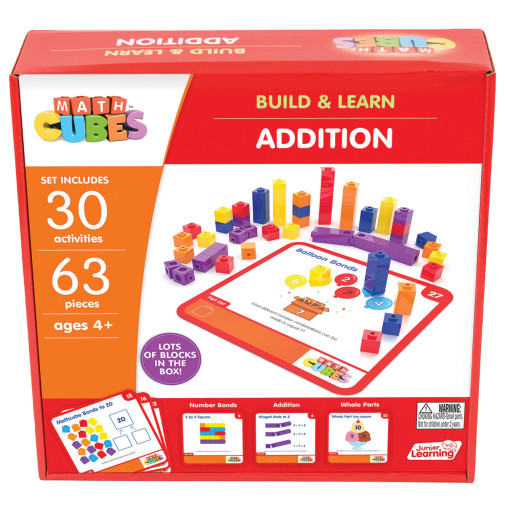We use cookies to make your experience better. To comply with the new e-Privacy directive, we need to ask for your consent to set the cookies. Learn more.
Math Cubes - Addition
- Small parts. Not for children under 3 years.
Help children deepen their understanding of addition concepts with this multi-sensory kit! With 63 colorful plastic pieces and 15 double-sided activity cards, kids build, visualize, and learn about number bonds, whole parts, and more. A great way to help kids bridge concrete and pictorial math to more abstract concepts. Stores nicely away in the sturdy box when done!
Junior Learning Mathcubes – Addition.
Discover the magic of number relationships with our Mathcubes Addition set. Visualize number connections like never before with our Mathcubes and innovative design.
The vibrant colors and innovative design not only appeal to the eye but also make abstract concepts tangible and easier to grasp.
15 double-sided activity cards combining 30 progressively challenging activities along with visual guides and step-by-step instructions. Carefully designed to stimulate learners’ minds, our unique sets cater to a wide array of mathematical concepts.
A perfect, multi-sensory approach to math! Understanding numbers/symbols is easier when using sight, touch, hearing, and movement. With 11 options across a wide range of math topics (including addition, subtraction, multiplication, angles, fractions, and more!), students feel, build, and see math concepts right before their eyes! Boxes include everything needed – colorful, plastic cubes and 15 double-sided cards (with 30 activities) to work out step by step with a visual guide. As students gain a solid understanding of the concrete and pictorial stages of math problems, they are more able to understand abstract problems.

